The following tables show state-by-state results in the Australian Senate at the 2013 Australian federal election.
Quick Facts 40 of the 76 seats in the Australian Senate 39 seats needed for a majority, First party ...
2013 Australian Senate elections|
|
|
| |
First party |
Second party |
Third party |
| |
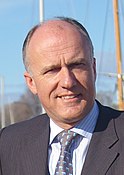 |
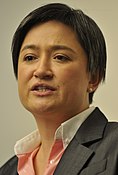 |
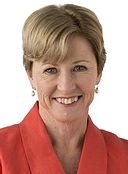 |
| Leader |
Eric Abetz[lower-alpha 1] |
Penny Wong[lower-alpha 2] |
Christine Milne |
| Party |
Liberal/National Coalition |
Labor |
Greens |
| Leader since |
3 May 2010 |
26 June 2013 |
|
| Leader's seat |
Tasmania |
South Australia |
Tasmania |
| Seats before |
34 |
31 |
9 |
| Seats won |
17 |
12 |
4 |
| Seats after |
33 |
25 |
10 |
| Seat change |
 1 1 |
 6 6 |
 1 1 |
| Popular vote |
5,057,218 |
4,038,591 |
1,159,588 |
| Percentage |
37.70% |
30.11% |
8.65% |
| Swing |
 0.92% 0.92% |
 5.02% 5.02% |
 4.46% 4.46% |
|
| |
Fourth party |
Fifth party |
Sixth party |
| |
 |
 |
 |
| Leader |
Clive Palmer |
David Leyonhjelm |
Bob Day |
| Party |
Palmer United |
Liberal Democrats |
Family First |
| Leader's seat |
MP for Fairfax
(won seat) |
New South Wales
(won seat) |
South Australia
(won seat) |
| Seats before |
New |
0 |
0 |
| Seats won |
2 |
1 |
1 |
| Seats after |
2 |
1 |
1 |
| Seat change |
 2 2 |
 1 1 |
 1 1 |
| Popular vote |
658,976 |
523,831 |
149,306 |
| Percentage |
4.91% |
3.91% |
1.11% |
| Swing |
 4.91% 4.91% |
 2.10% 2.10% |
 1.11% 1.11% |
|
| |
Seventh party |
Eighth party |
| |
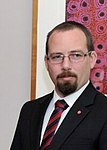 |
ASP |
| Leader |
Ricky Muir |
Wayne Dropulich |
| Party |
Motoring Enthusiasts |
Sports |
| Leader's seat |
Victoria
(won seat) |
Western Australia
(won seat) |
| Seats before |
New |
New |
| Seats won |
1 |
1 |
| Seats after |
1 |
1 |
| Seat change |
 1 1 |
 1 1 |
| Popular vote |
67,560 |
2,997 |
| Percentage |
0.50% |
0.02% |
| Swing |
 0.50% 0.50% |
 0.02% 0.02% |
|
 Senators elected in the 2013 federal election and the WA special election |
|
Close
Following a dispute of the results, the Western Australian results were declared void. The Western Australian senators were elected at the 2014 special election in Western Australia.
New senators took their places from 1 July 2014. This gave a Senate with the Coalition government on 33 seats, the Australian Labor Party opposition on 25 seats, and a record crossbench of 18: ten Australian Greens, three Palmer United, and single seats to David Leyonhjelm of the Liberal Democratic Party, Bob Day of the Family First Party, Ricky Muir of the Australian Motoring Enthusiast Party, John Madigan of the Democratic Labour Party and Nick Xenophon.[1][2]
This table includes votes and percentage from the 2013 election and the seat allocation is based on the void election in Western Australia. The 2014 Australian Senate special election in Western Australia includes the revised national totals after that election.
More information Party, Votes ...
Senate (STV GV) — Turnout 93.88% (CV) — Informal 2.96%[3][4]
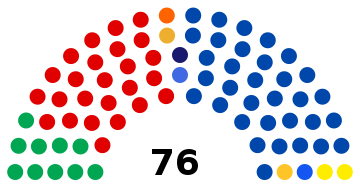 |
|---|
| Party |
Votes |
% |
Swing |
Seats won |
Total seats |
Change |
|
|
Liberal/National joint ticket [lower-alpha 3] |
3,938,204 |
29.36 |
–0.04 |
8 |
16 |
 1 1 |
| |
Liberal [lower-alpha 4] |
1,006,710 |
7.51 |
+1.08 |
8 |
16 |
 |
| |
National [lower-alpha 5] |
69,523 |
0.52 |
–0.19 |
0 |
0 |
 |
| |
Country Liberal (NT) |
42,781 |
0.32 |
–0.01 |
1 |
1 |
 |
| Coalition total |
5,057,218 |
37.70 |
–0.92 |
17 |
33 |
 1 1 |
| |
Labor |
4,038,591 |
30.11 |
–5.02 |
12 |
25 |
 6 6 |
| |
Greens |
1,159,588 |
8.65 |
–4.46 |
4 |
10 |
 1 1 |
| |
Palmer United |
658,976 |
4.91 |
+4.91 |
2 |
2 |
 2 2 |
| |
Liberal Democratic Party |
523,831 |
3.91 |
+2.10 |
1 |
1 |
 1 1 |
| |
Xenophon Group |
258,376 |
1.93 |
+1.93 |
1 |
1 |
 |
| |
Family First |
149,306 |
1.11 |
–0.99 |
1 |
1 |
 1 1 |
| |
Motoring Enthusiasts |
67,560 |
0.50 |
+0.50 |
1 |
1 |
 1 1 |
| Total |
13,413,016 |
|
|
40 |
76 |
|
|
| Invalid/blank votes |
409,149 |
2.96 |
–0.79 |
|
|
|
| Registered voters/turnout |
14,086,869 |
93.71 |
|
|
|
|
| Source: Commonwealth Election 2013 |
Close
The Senate has 76 seats. Forty seats were up for election; six in each of the six states, two for the ACT and two for the Northern Territory. The terms of the four senators from the territories commenced on election day. The terms of the six longest-serving state senators ended on 30 June 2014; the terms of the new state senators commenced on 1 July 2014, and were originally supposed to end on 30 June 2020—however, the entire Senate was dissolved at the double-dissolution 2016 election.[5][6]
The Senate saw the Coalition government on 33 seats with the Labor opposition on 25 seats, the Greens on 10 seats and a crossbench of eight—Palmer United on three seats, with other minor parties and independents on five seats (the LDP's David Leyonhjelm, Family First's Bob Day, Motoring's Ricky Muir and incumbents Nick Xenophon and the DLP's John Madigan). Muir announced he would vote in line with Palmer United.[7] The initial election saw Wayne Dropulich of the Australian Sports Party win a seat in Western Australia, but the subsequent voiding of the result and ensuing special election saw the Palmer United Party gain a third seat. The Coalition government required the support of at least six non-coalition senators to pass legislation.
A record number of candidates stood at the election.[8] Group voting tickets came under scrutiny because multiple candidates were provisionally elected with the vast majority of their 14.3 per cent quotas coming from the preferences of other parties across the political spectrum. "Preference whisperer" Glenn Druery organised tight cross-preferencing between over 30 minor parties as part of his Minor Party Alliance.[9][10][11] Sports' Wayne Dropulich won a Senate seat on a record-low primary vote of 0.2 per cent in Western Australia, his party placing 21st out of 28 groups on primary votes.[12][13][14] Motoring's Ricky Muir won a senate seat on a record-low primary vote of 0.5 per cent in Victoria.[15][16] Family First's Bob Day won a seat on a primary vote of 3.8 per cent in South Australia.[16][17] All three were involved with the Minor Party Alliance.[18] Previous examples of winning with low vote shares include Family First's Steve Fielding in 2004 on 1.9 per cent in Victoria,[19] the Nuclear Disarmament Party's Robert Wood in 1987 on 1.5 per cent in New South Wales, and the DLP's John Madigan won his seat in 2010 on a primary vote of 2.3 per cent in Victoria.[20] Xenophon and larger parties including the incoming government announced they would look at changes to the GVT system.[21][22][23]








